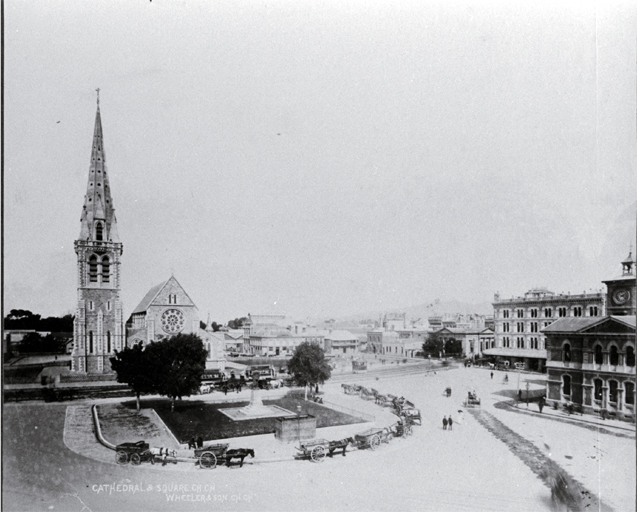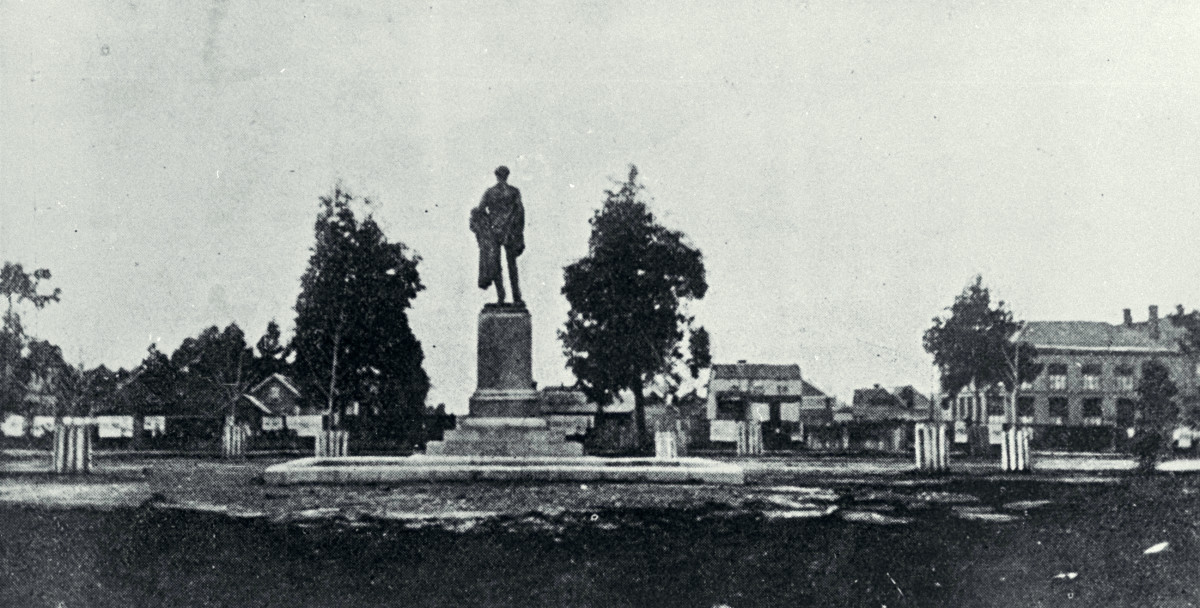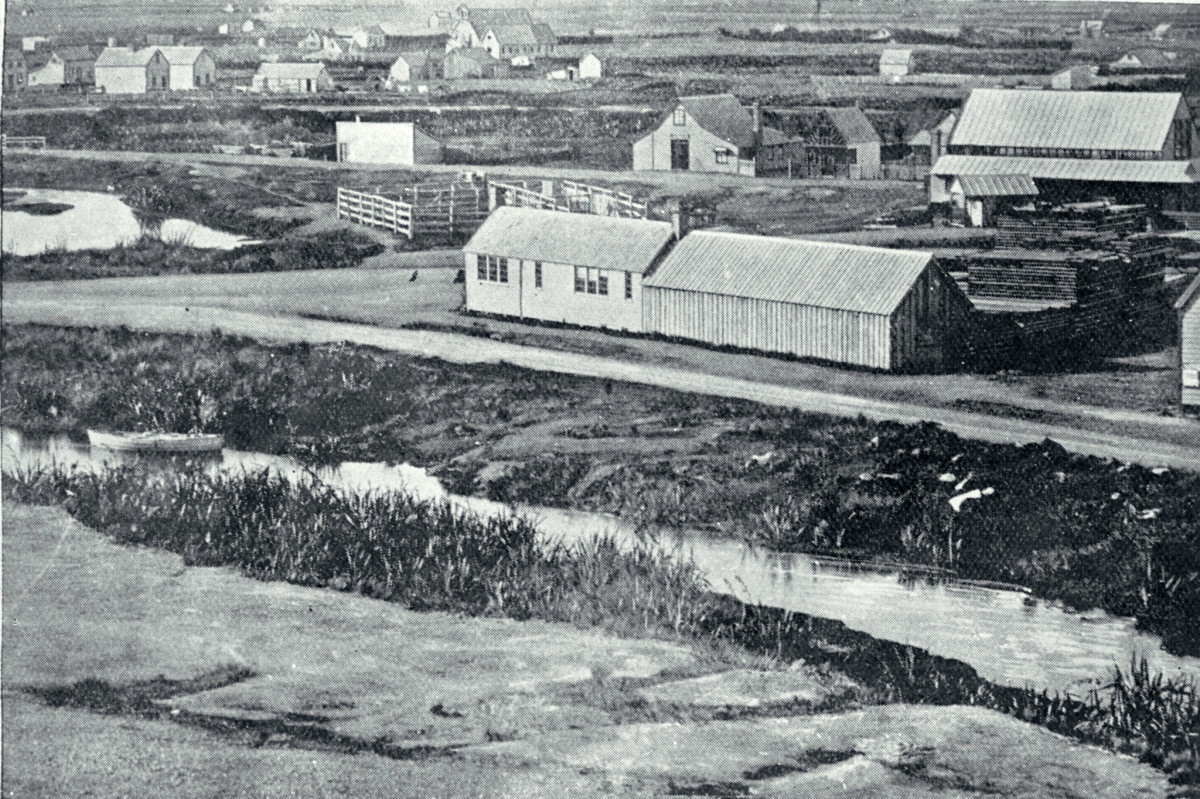Cathedral Square

The planned square in the centre of the town was supposed to be called Ridley Square after one of the Protestant martyrs, Bishop Nicholas Ridley, but in Edward Jollie's 1850 plan of central Christchurch it is clearly marked Cathedral Square.
In 1851 the Canterbury Association kept aside an area of the Square for the planned Christ Church Cathedral and also for a school. This land came under the control of the Church Property Trustees in 1855, and in 1857 the site planned for a grammar school (Christ's College) was exchanged for its present site in the Botanic Gardens.
There was not much development in the Square during the 1850s, but the Provincial Government paid out-of-work immigrants to level the land and plant blue gums. The gums can be seen in some of the photographs of Dr Alfred Barker, one of the first inhabitants of the Square.
In 1862 the block on the eastern side of the Square was kept for the cathedral, and the rest of the land was taken over by the Provincial Government. A shingle road across the middle linked the two sections of Colombo Street.
The building of the cathedral began with the laying of the foundation stone in 1864, and the amount of activity in the Square grew from then on.
On 6 August 1867 the Godley statue was unveiled on its pedestal opposite the cathedral. John Robert Godley was thought of as the founder of Canterbury, and when he died in England in 1861, the people of Christchurch decided to put up a statue of him. It was the first public statue in New Zealand. It was designed by the sculptor Thomas Woolner and cast in metal from Russian guns used in the Crimean War of 1854-1856.

The Post Office was opened there in 1879, a drinking fountain was put in place about 1878, footpaths were laid and sealed, and a cabstand was installed.
As the heart of the city shifted from Market Square (now Victoria Square) to Cathedral Square, the bustle there increased. Often there were sideshows, buskers and speakers on soapboxes, as well as country fairs, and sheep and cattle markets.
The gold coach left for the West Coast goldfields from the Square, and people with shopping or business in town would leave their horses and carts there.
When steam trams began operating in the city in 1880, they left from the Square. Later, when buses replaced trams in 1954, the Square was still used as the main point of departure. This did not change until the Bus Exchange in Lichfield Street opened in November 2000. Trams returned in 1995, with the introduction of a tourist tram ride around the central city, including the Square.
After the First World War people began to talk about a war memorial for the Square. When the Godley statue, which had been moved to stand on the north side of the cathedral, was relocated to its original site in 1933, a suitable site became available. The War Memorial was designed by the Christchurch-born sculptor William Trethewey, and was unveiled on 9 June 1937.
Over the years Cathedral Square has been redesigned and redeveloped. Two important changes took place when the road in front of the cathedral was closed in 1965, and the road in front of the Post Office closed in 1972.
The Four Ships Court was laid out and four lime trees planted to stand for the first four ships of the Canterbury settlement. Seven other trees planted in the Square represent the seven oceans and were given to the city by the Antarctic Support Force of the US Navy in 1973.
In December 2000 a columbarium (a resting place for the ashes of dead people) on the south lawn of the cathedral had its first urns put in place. In the same month a statue representing the 'Risen Christ', sculpted by Terry Stringer, was unveiled next to the southwest doors of the cathedral.
Victoria Square

Victoria Square was at first known as Market Square or Market Place. It was the centre of town life until the 1870s when new businesses began to grow around Cathedral Square.
From the beginning Market Square was the hub of the new town. George Gould opened his general store on Colombo Street, facing Market Square, on 3 May 1851. The Post Office, Police Station, Women's Prison and Immigration Barracks were all found there. The market days and fairs for which it had been planned took place there.
Victoria Street cut through the square diagonally to connect with Colombo Street, and was not blocked off to create a real 'square' until the Parkroyal Hotel (which later became Crowne Plaza) and square redevelopment in 1988-89. It was an important road, carrying the traffic flow from Papanui Bush where a lot of the timber and firewood for the town came from.
An early wooden bridge carrying traffic along Victoria Street across the Avon River was replaced by an iron-and-stone bridge in 1865. It was one of the earliest of its kind in New Zealand, and is still in use.
![Black and white photo of Victoria St bridge, [ca. 1888]](https://christchurchcitylibraries.com/Heritage/Photos/Disc1/IMG0035.jpg)
A statue of Queen Victoria, sculpted by Francis J. Williamson, was unveiled on 25 May 1903 to commemorate the Golden Jubilee (50 years) of the Canterbury Settlement. Market Square was renamed Victoria Square in her honour. Another statue found in the square is of Captain James Cook, sculpted by William Trethewey, and unveiled on 10 August 1932.
In 1915 a local businessman, Henry Bowker, died and left money to the city for a fountain to be installed in front of the proposed Town Hall. In 1931 the H.L. Bowker Fountain opened, but the Town Hall was not built until 1972.
Cranmer Square and Latimer Square
These squares were named after two of the Protestant martyrs, Bishop Cranmer, and Bishop Latimer.
One of the first stone churches in Christchurch, St John the Baptist Anglican church, was built on the edge of Latimer Square in 1864.
In April 1876 the Normal School in Cranmer Square opened, and became New Zealand's first teachers' training college in 1877.
In September 1928 when Charles Kingsford-Smith, flying his plane the Southern Cross, landed in Christchurch after the first successful trans-Tasman flight, a civic reception was held for him in Cranmer Square.
Explanations
- Protestant martyrs
- In 1555 Mary I, a Roman Catholic, ordered three of the leading Protestant bishops, Cranmer, Latimer and Ridley, to be burned at the stake. These men were the first of the Protestant martyrs in England, who died because of their religious beliefs. Three of the squares in Christchurch were supposed to be named after them, but Ridley Square became Cathedral Square instead.
Sources
- Christchurch City Council. Handbook: 1996-1997, Christchurch, 1996
- Federation of University Women, Canterbury Branch. Round the square: a history of Christchurch's Cathedral Square, Christchurch, 1995
- Rice, Geoffrey W. Christchurch changing: an illustrated history, Christchurch, 2000
